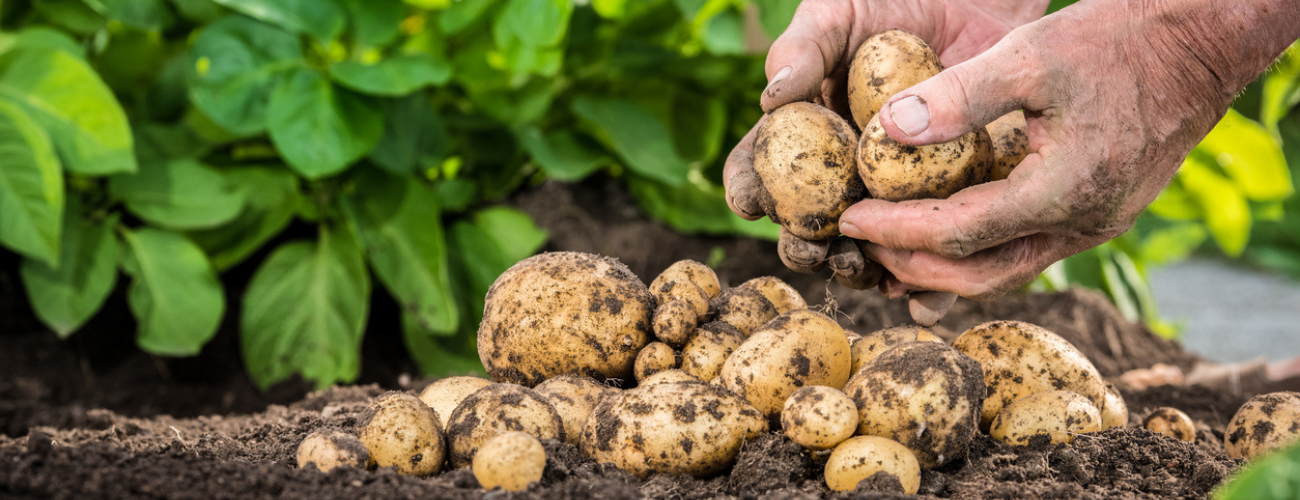The humble potato. Who doesn’t love one or all of the following: chips, mash, roasties, new potatoes with butter, baked potatoes, potato salad, dauphinoise…? They are so easy to grow at home; read this guide to find out how.
Most UK seed potatoes are grown in Scotland under strict conditions to avoid spreading disease. Do not use supermarket potatoes which are not guaranteed to be disease free and are often treated to prevent sprouting. Tates of Sussex sell only certified stock, and we try to offer the widest range available in the peak selling season.
There are four main types —first earlies, second earlies, salad varieties and maincrops, depending on when they are planted and harvested. If you have plenty of space choose both early and maincrop varieties. Should your plot be small, then early are the answer as they take up less space, will provide new potatoes at a time when shop prices are high and you will miss the destructive disease blight. Salad potatoes are generally all earlies.
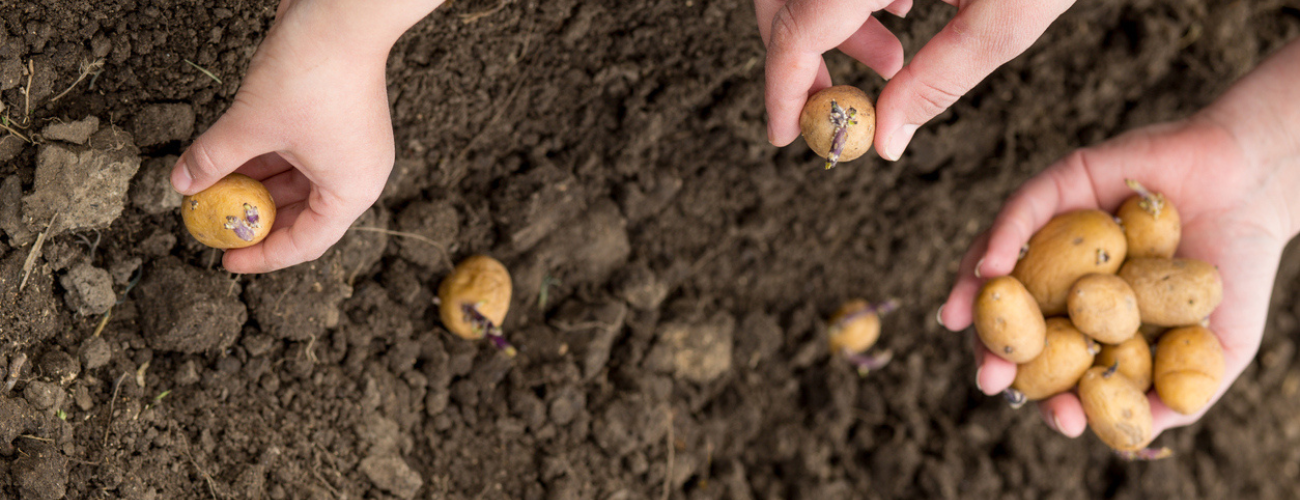
Chitting Potatoes
Once you have chosen your potatoes it is a good idea to chit them first. The ground is usually still too cold or wet to plant out but you can get a head start to growing by allowing their shoots to start developing. Place your potatoes in trays or egg boxes so that the sides with most eyes are face up and leave in a cool bright position such as a windowsill until the shoots are about 2cm long. This takes up to 6 weeks. Do not keep them in the dark, the shoots will become too long and fragile and likely to snap off when planted.
Preparing the site
Potatoes grow best in an open position in full sun on rich, well-drained soil. Avoid soil where potatoes have been grown in the previous two years to decrease the risk of disease. A slightly acidic soil is preferable but not essential. If possible manure the area the previous autumn or add lots of compost or potato fertiliser in spring. Potatoes can also be successfully grown in large containers with multipurpose compost.
Planting and Ongoing Care
There are a number of planting styles for potatoes but for each be careful not to snap the shoots off.
Trench Method:
Dig a trench one spit (spade’s depth) deep, space tubers at 30cm intervals in rows 60cm apart for earlies and 40cm intervals in rows 75cm apart for maincrops. Cover the tubers to soil level. When the stems emerge carefully draw soil up and over the stems to produce a flat-topped ridge about 15cm high or add a bag of peat free compost to the top. Called ‘earthing up’, this protects stems from late frosts and encourages tuber growth for a larger crop. Repeat this until you have a mound about 30cm high. This also helps to block light from the developing tubers. Potatoes that grow in the light become green and green potatoes are poisonous, don’t eat them.
Single holes:
If digging a whole trench sounds too much like hard work, dig single holes for each seed potato in a line at the spacings mentioned above and earth up in the same way.
French method:
Use a raised bed and dig single holes but space the potatoes much closer together and then leave them with no earthing up, which is a lot less work. The foliage grows densely and prevents greening of the tubers. You should still get the same number of potatoes but they may be smaller in size. So if you have a raised bed it’s a good way to grow new potatoes and leave space in open ground for maincrop potatoes.
Container method:
Put 15cm of multipurpose compost in the bottom of a large deep container (first earlies are best for containers). Place 3 or 4 seed potato tubers on top and cover with another 15cm of compost. As new stems grow, keep adding compost until the pot is full.
Water crops well in dry weather, especially when in flower and the tubers are forming. A fortnightly liquid feed of a balanced general fertiliser can increase yields. If there is still a danger of frost when the shoots have begun to emerge, draw a little soil over them or pin down some fleece for protection.

Harvesting
For earlies, wait until the plants are flowering then carefully dig into the ridge and examine the tubers. If they are a size you are happy with, dig some up being careful not to spear them with your garden tools. Dig them up as needed and leave the rest to continue growing. If growing in containers, tip the contents out onto a tarpaulin or plastic sheet and let the kids find all the treasure! Then use the spent compost as mulch for beds borders or other containers. Earlies do not store well so dig up and eat them fresh.
For maincrops, once the foliage has turned brown and the stems have withered choose a dry day to dig them up. Let the tubers sit on the soil surface for several hours to dry off the skins. Don’t wash before storing or store any damaged ones. Place them in a wooden box or dry paper or hessian sack and store in a dark cool frost-free place. All light must be excluded. Check stores regularly and remove rotting ones.
Growing potatoes for Christmas
It is possible to grow potatoes for use over the festive season by planting fresh first or second early seed potatoes 12 weeks before Christmas. They are available in July/August from garden centres (potatoes harvested in summer will be dormant and will not produce tubers for winter). You will not need to chit these before planting, plant in the same way as already described but be aware you will need to protect them from frost. Container growing is recommended if you have heavy soil. Also it allows you to move containers to a frost free greenhouse or conservatory if needed. After the foliage has died down keep the plants fairly dry until you are ready to harvest.
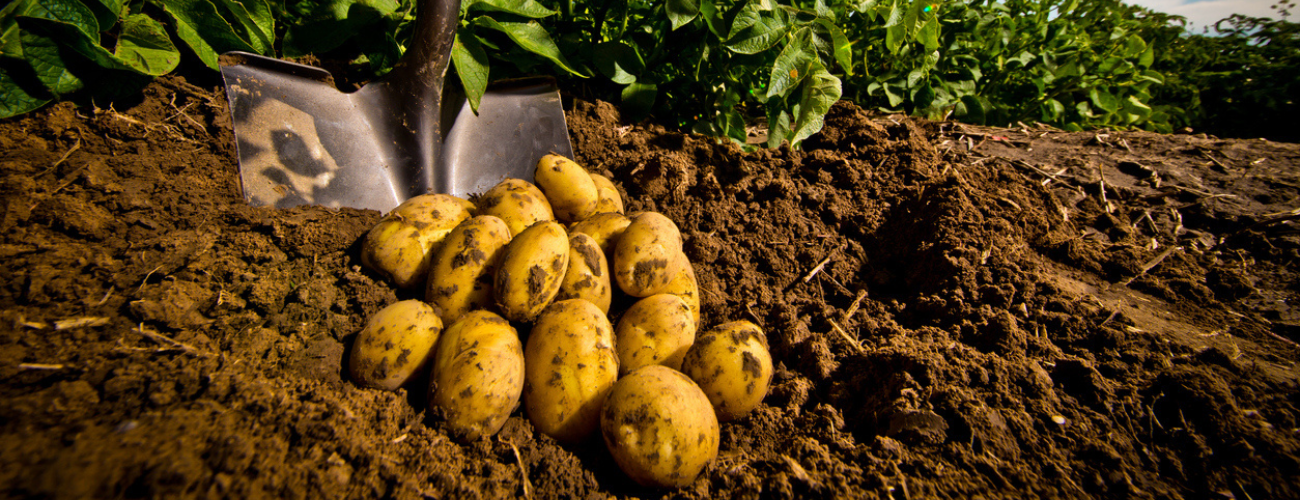
Top tips and problems
When harvesting, try not to leave any tubers in the soil no matter how small, to avoid problems next year.
Potatoes after flowering often have tomato like green fruits growing on the plants – don’t eat them because like green potatoes they are poisonous.
Slugs can be a problem making holes in the tubers as can eelworms if growing in freshly cleared ground.
Potato blight is the most common issue in wet, warm summers. The initial symptoms are a rapidly spreading brown rot, affecting leaves, and stems. Removing all top growth at the first sign means you may still have intact potatoes under the soil. Do not compost diseased plant matter. Earthing up potatoes provides some protection to tubers. Try blight resistant cultivars or stick to earlies which are usually harvested before blight strikes.
When growing potatoes on more alkaline or dryer soils you may get skin blemishes like common scab but these are cosmetic and do not affect the eating quality of your potatoes.
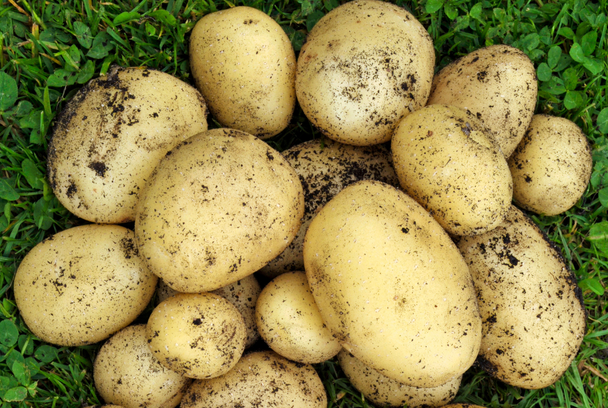
First early varieties
First earlies are planted between March and April and harvested between May and July. They are often called new potatoes as they are ready to harvest before other varieties, around 9-14 weeks after planting. They produce lots of tasty, small potatoes.
Duke of York
Traditional early variety, harvest when young for a rich sweet flavour or leave to mature for a floury texture. Makes excellent baked potatoes.
Maris Bard
High yielding first early variety that bulks early. Very reliable. Good drought resistance.
Red Duke of York
A traditional red-skinned variety with a yellow flesh. Makes excellent roasts. AGM
Rocket
Heavy cropping early variety. Does not store well, best eaten fresh from the ground.
Swift
Exceptionally early variety which produces lots of small round potatoes. Ideal for container growing.
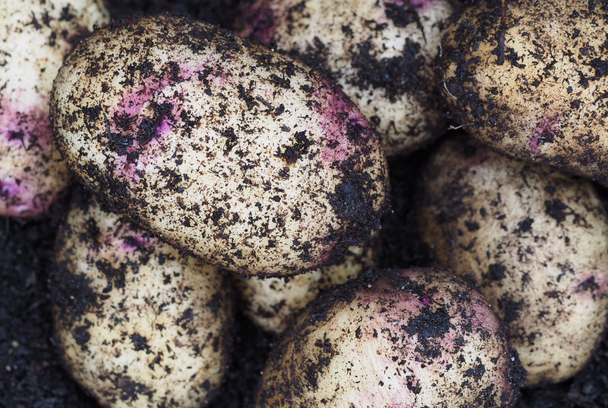
Second early varieties
Second earlies are planted between March and April and harvested between July and August. They take longer to grow than first earlies so are ready to harvest around 14-17 weeks after planting. Yields are higher, and the potatoes are bigger than first earlies. Ideal for boiling and salads, they are also good general-purpose potatoes.
Acoustic
Excellent all-rounder. Strong resistance to blight.
Kestrel
Attractive skins with purple eyes. Makes excellent chips and roast potatoes. Good disease resistance.
Maris Peer
Popular second early potatoes with a very good flavour. Are good as salad potatoes. Plant produces large clusters of pretty purple flowers.
Nadine
Exceptionally high yielding variety with bright white skins and a good entry for the show bench. Good for baking and chips. AGM
Nicola
A second early with lovely smooth tubers and thin skin. A great tasting waxy potato producing a generous crop. Ideal for boiling as a new potato or for salad. Stores well for eating through the summer.
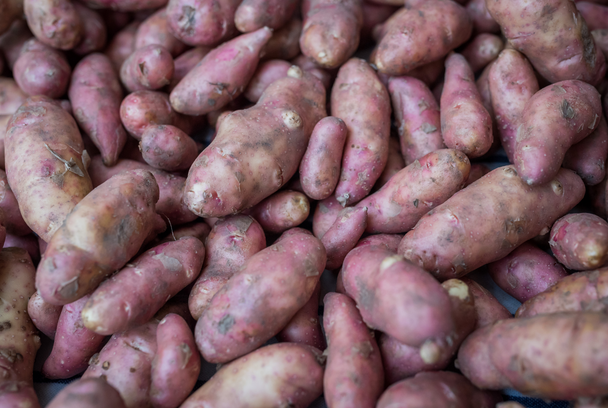
Salad varieties
Salads are planted between March and May and harvested between June and September. Salad varieties tend to be long, oval varieties with a waxy texture that remains firm when cooked. Taste is generally described as fine to gourmet. They can be first early, second early or maincrop.
Charlotte
A very attractive long potato with an unbeatable creamy flavour straight from the garden to the pot! AGM
Pink Fir Apple
Popular in Victorian kitchen gardens this knobbly salad potato has an unrivalled nutty flavour. Cooking with the skin on will retain its pink skin colour. AGM
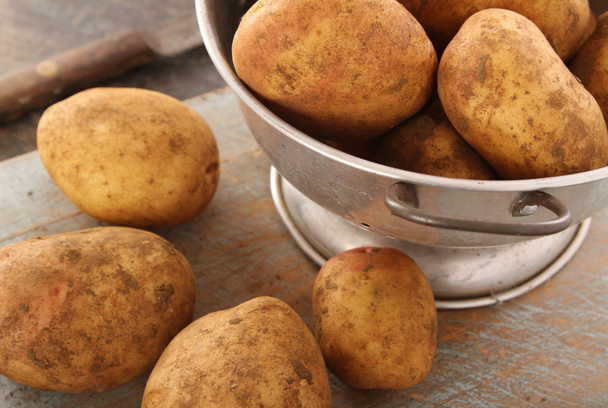
Maincrop
Maincrops are planted between March and May and harvested between August and September. They require the longest growing period and are generally ready to harvest 17-20 weeks after planting. They can produce high yields of large potatoes and can be stored through the winter, if required.
Cara
Big-yielding variety with an attractive skin. Good resistance to blight. A good choice for baking and for long term storing.
Desiree
The most popular red-skinned variety in the UK giving great crops of large potatoes. Good culinary potato which boils well and has a delicious smooth texture. AGM
King Edward
A well-known favourite in the potato world. Attractive white skins with bright splashes of red. Makes the ideal roasts and baked potatoes but is also good boiled with a strong, aromatic flavour.
Maris Piper
Probably the best known potato in Britain and one of the most versatile with an attractive plant with purple flowers. The potatoes taste great as chips, mash, roasts or simply boiled and store well. AGM
Picasso
A main crop variety with yellow skin and prominent red eyes. High yielding with good long term storage. AGM
Setanta
One of the most blight resistant potatoes available in the UK and also scab and slug resistant. A red skinned maincrop variety which is particularly good for chips, roasting and mash.
Java
A red skinned maincrop potato with excellent blight resistance. Consistently high-yielding and ideal for gardens and allotments. Ideal for boiling, mashing, baking and roasting.
AGM = holds an RHS Award of Garden Merit.

By our resident horticultural expert





